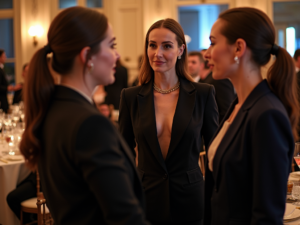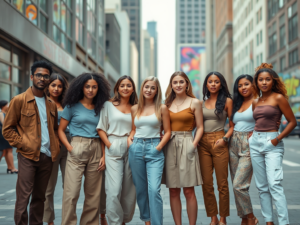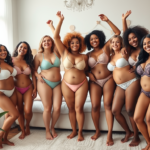Dressing well transcends mere fashion; it encapsulates the intricate interplay between colors and human psychology. When you step into a room, your choice of clothing and its colors can create an immediate impression—not just about your style but about your personality, confidence, and even your state of mind. The subtle yet profound influence of colors in our attire can have a significant impact on how we perceive ourselves and how others perceive us. Each shade conveys a different message, shaping our interactions and experiences in both personal and professional realms. Thus, understanding this power of colors is essential for anyone wishing to cultivate their presence in the world.
To harness the power of colors effectively, one should delve into the psychology behind each hue. Colors are not just visual stimuli; they evoke emotions and incite reactions. The motivations behind color choices can range from cultural significance to personal preference, creating a complex web of associations. By exploring how each color can influence our emotions and perceptions, we gain insight into how we can dress to both feel and appear our best. This awareness can be particularly transformative in high-stakes situations like job interviews or first dates, where first impressions matter the most.
The Psychology of Colors

Colors can evoke powerful emotions and convey specific messages without a single word being spoken. Each color is imbued with its unique meaning and emotional significance, affecting our thoughts, feelings, and behaviors in profound ways. For instance, when people see the color red, it can stimulate feelings of passion and excitement, essentially energizing the atmosphere. On the other hand, blue often promotes tranquility and trustworthiness, making it an excellent choice for professional environments.
- Red: symbolizes passion, energy, and action.
- Blue: conveys calmness, trust, and professionalism.
- Yellow: represents happiness, positivity, and creativity.
- Green: often associated with growth, harmony, and fresh starts.
- Purple: signifies luxury, ambition, and wisdom.
Colors in Fashion: An Overview

Fashion serves as an expressive medium through which individuals can showcase their identities and moods. The right color choices can not only complement one’s appearance but also enhance their overall presence. When creating a wardrobe, it’s essential to consider both the occasion and the messages conveyed through different colors. This a crucial part of making informed style choices that align with your personal brand.
Moreover, color can also influence the emotional undertones of an outfit, impacting how you feel when you wear it. When people choose to incorporate vibrant shades, they often feel more energetic and lively. Alternatively, opting for muted, neutral colors can induce feelings of safety and comfort. This awareness of how colors can affect both perception and mood should guide wardrobe selection.
| Color | Emotional Impact | Best for |
|---|---|---|
| Red | Energy and Passion | Social Events |
| Blue | Calm and Trust | Professional Settings |
| Yellow | Happiness and Creativity | Casual Gatherings |
| Black | Authority and Elegance | Formal Occasions |
| Green | Growth and Harmony | Relaxed Environments |
Dressing for Occasions
The selection of colors for your outfits should harmonize with the setting of the event you are attending. For instance, darker colors such as navy, black, and charcoal are often favored in formal settings due to their professional appeal. These hues convey seriousness and authority, making them appropriate for business meetings, interviews, and formal gatherings. It’s essential to understand how color can set the tone for your appearance in context.
Formal Events
When dressing for formal occasions, consider incorporating colors that command respect and demonstrate professionalism. Shades like deep blue or charcoal grey can instill a sense of trust and reassurance, while lighter shades might diminish the formality. Choosing the right colors is crucial for creating the impact you desire in formal situations.
Casual Settings
Conversely, lighter and brighter colors are perfect for casual settings, where you want to convey a laid-back and approachable demeanor. Shades like pastel hues or vibrant patterns can foster a welcoming atmosphere, encouraging open communication and friendliness. Being aware of the emotions that specific colors may evoke can help tailor your choice of attire, contributing positively to social interactions.
The Influence of Colors on First Impressions
The colors you choose to wear play a pivotal role in forming first impressions. Research has consistently shown that individuals make quick judgments about others based on visual cues, with clothing color often at the forefront. In professional contexts, wearing attire in suitable colors can influence perceptions of your competence, confidence level, and approachability. This means that being deliberate about your wardrobe can lead to better outcomes in job interviews, networking events, and social gatherings.
- Bright Colors: Typically seen as friendly and approachable.
- Dark Colors: Often interpreted as authoritative and serious.
- Warm Colors: Such as orange and red, can stimulate energy and excitement.
- Cool Colors: Like blue and green, promote relaxation and trust.
Building a Personalized Color Palette
Creating a personal color palette allows you to reflect your skin tone, personality, and lifestyle in your wardrobe choices. This practice not only enhances your appearance but also boosts your confidence. Begin by assessing your skin tone—whether it leans warm or cool—as this will guide your color selection. Once you have a better understanding of what works for you, experiment with different shades to find the colors that you feel most comfortable in.
Additionally, keep in mind that your personal style and comfort should always be prioritized. A wardrobe filled with colors that resonate with you can help articulate your identity effectively. In turn, this can lead to more powerful self-expression and a better connection with those around you.
Conclusion
Understanding the impact of colors in dressing well is fundamental to expressing oneself and creating positive first impressions. By making deliberate choices about the colors in our wardrobes, we not only influence how we feel but also how we communicate with the world. This understanding equips us with the power to enhance our personal and professional interactions through attire. Ultimately, being mindful of color psychology can facilitate success in various aspects of life, from social encounters to career advancement.
Frequently Asked Questions
- Why is color important in dressing well?
Color influences mood and perception, affecting how others see you and how you feel about yourself. - How can I choose colors that suit me?
Assess your skin tone (cool/warm) and experiment with shades that enhance your natural features. - Do colors impact professional settings?
Yes, certain colors are more appropriate for formal environments and can convey credibility and authority. - What colors are best for interviews?
Neutral and darker tones, like navy and black, are typically recommended for interviews as they convey professionalism. - Can I wear bright colors to work?
Absolutely! Just ensure they’re balanced with more neutral pieces to maintain a professional appearance.







